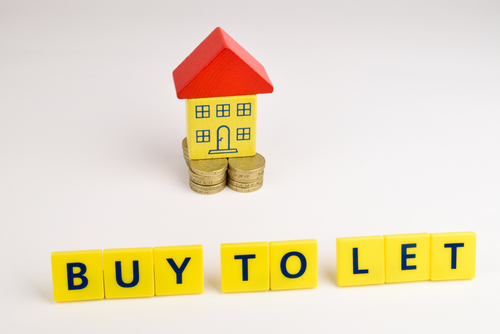Almost one in six homes is now a private rental property, as both home ownership and social housing decline.
The English Housing Survey from Communities and Local Government shows that the number of households renting privately has gone up by one million in the last five years.
In 2005-06, there were 2.4 million private rental households, which rose to 3.4 million in 2009-10.
The private rented sector now accounts for 15.6% of all households in England, up from 14.2% in 2008-09 and 11.7% in 2005-06.
Commenting on the survey, Grenville Turner, chief executive of Countrywide, the UK’s biggest chain of estate agents, said: “The UK has traditionally been a nation of home owners, and whilst millions still aspire to buy their own property, current market conditions make that more challenging than usual. Our agents saw a 17% increase in new buyer inquiries during 2010, but market transaction levels remained flat.
“Successive governments have widely encouraged home ownership, but the impact of the recession has led to a structural change in the market, with record levels of tenant demand. As the UK’s largest letting agent, we have seen a 37% increase in new tenant applications during 2010 with 4.5 tenants vying for every available property.
“We are now beginning to see a shift in attitude, as a whole new generation is growing up choosing to rent long term, and the average age of a first-time buyer has risen to 37. Record levels of tenant demand and a severe shortage of stock in the private rental market is a national issue which needs addressing.”
Other key findings from CLG’s survey include:
*There has been a decrease in the number of owner-occupied households from a peak of 14.8 million in 2005-06 to 14.5 million in 2009-10. The proportion of households in owner occupation has been in decline since 2003, falling from 70.9% to 67.4% during the period
*The proportion of social renting households is also in decline, falling from 19.5% in 2001 to 17.0% in 2009-10
*Overall, social sector homes are in better condition than private sector homes. However, the private sector is improving. In percentage terms, the number of non-decent homes in the private rented sector has fallen from 46.8% in 2006 to 40.8%
*60% of all private rented households are living in decent homes, up from 56% in 2008, whilst the energy efficiency of homes in the private rented sector has improved more over the period than the owner-occupied sector
*Couples with no dependent children are the most common type of household in the private rented sector (26%), with one-person households under 60 being the second largest household type at 23%
*Lone parent households are more common in the private rented sector; 12% of private renters compared with 3% of owner occupiers
*Half of all private renters are aged under 35 with half a million (15%) aged 16-24 and 1.2 million (35%) aged 25 to 34
*The private rented sector encompasses a wide range of economic status: 60% of households are in full-time employment, 9% in part-time work, 7% are unemployed, 8% are retired and 11% are classed as ‘other inactive’
*24% of private renters receive housing benefit compared with 62% of social renters
*There are 3.4 million properties in the private rented sector, 60% of which are located in suburban residential areas compared with just 4% in the city centre
The implications for estate agents, letting agents and the lending market are huge, with tenant demand currently outweighing supply in most areas of the UK.
Yet the sector is unregulated, with no legal requirement to join the Property Ombudsman Scheme, nor for letting agents to keep client money in separate accounts.
Under the Estate Agents Act, letting agents are not even recognised, whilst buy-to-let mortgages are not only currently in short supply but are not regulated by the Financial Services Authority. The FSA sees buy-to-let mortgages as a business sector, where the customers are business people who can make up their own minds.
Because letting agents and landlords are not required to join the Property Ombudsman Scheme, private tenants have very little access to redress.
Complaining to voluntary bodies may not bear fruit, as although ARLA boasts 6,000 or so members, these are individuals and not firms. ARLA membership used to be a combination of corporate and individuals, but no longer.
Attempts to regulate both letting agents and private residential landlords have fallen to the voluntary sector, but take-up of membership of bodies such as ARLA and the National Approved Letting Scheme by agents is low – although how low is uncertain, given the lack of regulation, and complicated by the fact that ARLA positions itself as the crème organisation.
The two main landlord bodies are the NLA and RLA, which dominate the sector. But the two together would not begin to claim that their members have 3.4 million properties between them, in England alone.
Nigel Terrington, of respected buy-to-let specialist lender Paragon, said: “CLG’s figures highlight the growing number of people relying on the private rented sector to provide their housing needs. The sector’s importance to UK housing continues to grow as increasing numbers of people opt to rent privately rather than step on the housing ladder.
“Demand for privately rented property is at an unprecedented level and far outweighs supply. The resulting rental inflation is leading to people, including the most vulnerable households, being priced out of the sector at a time when the supply of social housing is in decline.
“With Capital Economics estimating that the private rented sector will be home to nearly one in five households by 2015, it is crucial that adequate levels of buy-to-let mortgage finance are available to enable landlords to expand the number of properties in the PRS.”
www.communities.gov.uk/publications/corporate/statistics/ehs200910headlinereport
One million more private rental homes in space of four years
28 February 2011














Comments